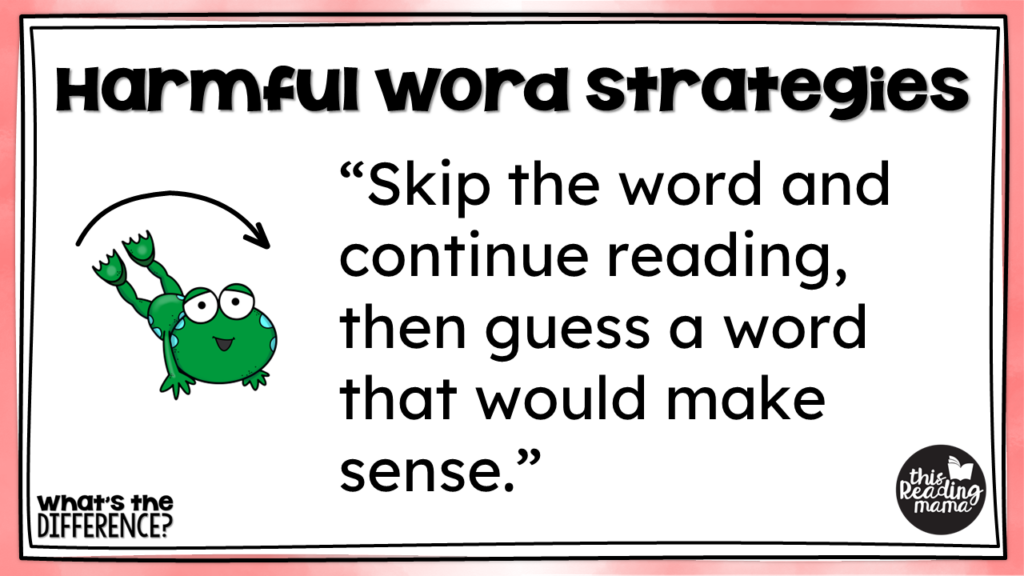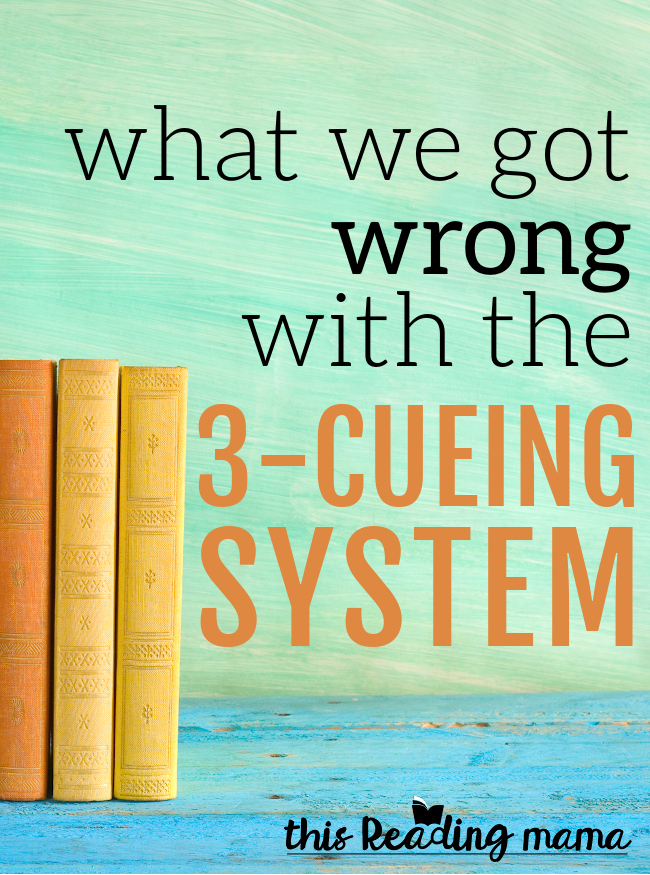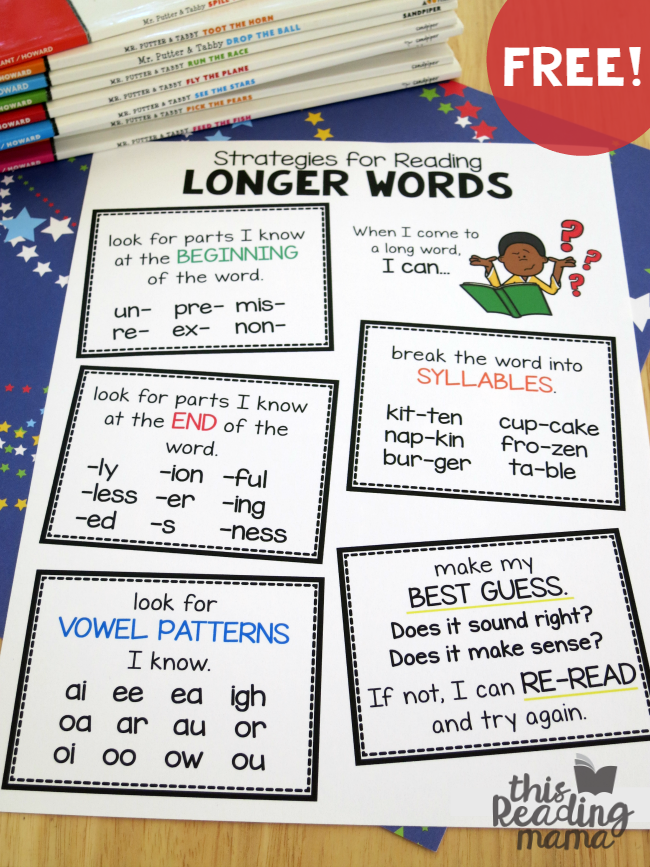What’s the difference between helpful and harmful word strategies?
The main purpose of this blog and video series has been to explore and explain some of the differences concerning terms used in the field of literacy. Today, I’m going a little off-road to compare two kinds word strategies.
The comparison will be between the word strategies I used years ago, which I now understand as harmful, versus the word strategies I use now, which are helpful for readers.
Quick Disclaimer
Please understand that I am not using the term “harmful,” however, to imply in any way that teachers or parents who use {or used} these strategies are intentionally harming their learners. I spent many, many years using these harmful strategies with beginning and struggling readers.
This is what I was taught. This is what I knew. At the time, I felt I was doing my best to help my readers.
But now that I know better, I teach better. And I think that’s all we can ask of ourselves. {No guilt needed.}
The text in this blog post is the text from my video.
Watch the full video on my YouTube channel.
What are Word Strategies?
Word strategies are what we teach readers to help them figure out unknown or unfamiliar words. So, if they come to a word in the text that they don’t know, how do they figure it out? First, let’s look at strategies that aren’t so helpful to our readers.
Harmful Word Strategies
Harmful word strategies are those that teach our readers to heavily rely on the context to figure out unfamiliar words.
For example, when learners are just beginning to read and come across an unfamiliar word, we might say, “Look at the picture” to figure out the word. In this example, we are teaching readers to use the picture, not the word itself, to figure out the unknown word or words.

Another example would be, “Skip the word and continue reading the sentence. Then, guess a word that would make sense.” This advice is teaching learners to use the context of the sentence to figure out the unknown word.
These were a couple of the strategies I taught to my beginning and struggling readers. So, why exactly am I calling these “harmful” word strategies?
In her article, “At a Loss for Words,” Emily Hanford shares the story of a lady named Molly Woodworth.
Molly admits she was not a good reader in school but had developed some coping strategies that allowed her to get by almost undetected. She shares that she had learned to memorize as many whole words as possible, guess words based on the context of what she was reading, or even skip words when she didn’t know them. She called these strategies her “dirty little secrets.”
And when Molly visited her daughter’s school, she noticed the teacher was teaching the class to use some of the same strategies she had taught herself to cope with her reading difficulties.
In this moment, Molly thought…
Oh my…those are my strategies. Those are the things I taught myself to look like a good reader, not the things that good readers do. These kids were being taught my dirty little secrets.
In other words, using context clues is the main coping strategy struggling readers ALREADY USE to help them figure out unfamiliar words. These simply aren’t helpful strategies that build strong readers. {See my article, Using Context During Reading.}
Ken Goodman was one of the leaders that argued for using these harmful strategies with readers.
In his 1967 article, “Reading: A Psycholinguistic Guessing Game,” Goodman revealed that letters are very unreliable. That readers were left to just play a “guessing game” when reading. In other words, context had to be relied on because the words themselves could not.
Entire reading movements came from his belief {or I’d say “misbelief”}. And from these movements came many harmful word strategies, although they truly aren’t word strategies at all.
Alright, so what are helpful word strategies?
Helpful Word Strategies
Helpful word strategies are strategies that teach readers to apply their phonics knowledge to figure out unfamiliar words. Instead of looking to context clues as their main strategy, we are teaching readers to use the phonics knowledge they know to examine the word and figure it out.
One example of a helpful word strategy would be, “Look for chunks you know in the word.”
Or, “slowly sound through the entire word, starting at the beginning.” In both examples, readers are encouraged to LOOK AT THE WORD and apply what they know to figure out the word.
Keep in Mind…
When using word strategies, here are a few things to keep in mind:
- Re-reading texts is necessary for comprehension. The first few times through a book, learners will probably be most focused on figuring out the words instead of figuring out what the story or text means. As they become familiar, their brain can focus more on making meaning.
- Context isn’t a bad word. Context makes the book enjoyable and understandable. The difference is that proficient readers don’t use context as their “go to” to figure out words.
- The kids of texts we choose are important. In our next blog post/video, we’ll explore the differences between leveled books and decodable books. And even within decodable books, it’s important to choose books that do not use jilted or manipulated language that makes it difficult for our readers to understand.
More Videos and Posts in this Series:
Enjoy teaching!
~Becky




